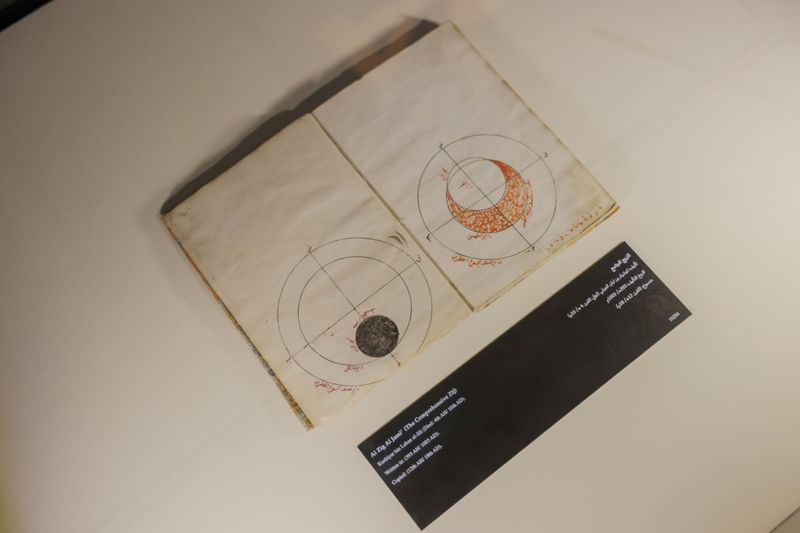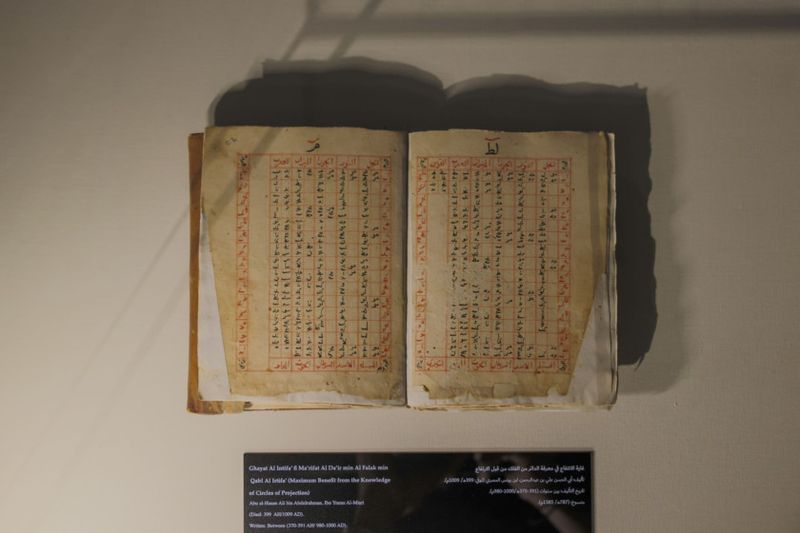
Sharjah: If you’re looking for something inspirational this weekend, just head to the House of Wisdom in Sharjah. An exhibition called ‘Takwin: Sciences and Innovation’ will transport you to the starlit skies of the Islamic era, showing you how early Arab and Muslim scientists, particularly in astronomy, inspired a new generation of thinkers and knowledge seekers.
Long before astronomy, as we know it today, came about, these pioneers hypothesised theories about the earth’s sphericity, rotation, and other astronomical phenomena. Their rare manuscripts on display at the exhibition are adorned with intricate drawings, data and calculations, offering a window into their starry world.
As the exhibition holds out, the profound understanding of the cosmos that began to unfold was deeply rooted in the Arab-Islamic society. It was not just a scholarly pursuit but a cornerstone shaping spiritual practices and marking important breakthroughs in astronomy. The ancient scholars’ work with celestial bodies was not just about understanding the universe; it was woven into the fabric of daily life, guiding prayer times, orienting the Qibla, and marking events like Ramadan and Haj.

As the Abbasid state rose to prominence in the golden age of Islam, the science of astronomy gained an elevated status. The Abbasid caliphs, known for their intellectual aptitude, created an environment where creativity and innovation were valued and encouraged. This era, marked by an exchange of knowledge across diverse cultures and religions, significantly enriched the Arab-Islamic civilisation. Among the luminaries of this era was Thabit Ibn Qurra.
More than just a scholar, Ibn Qurra was a visionary who advanced the calculation of the astronomical year to a remarkable precision of 365 days, six hours, nine minutes, and 12 seconds, with a variance of mere seconds.
Astronomy theories
Among the exhibits is the manuscript ‘Anatomy of the Celestial Spheres’ by Baha Al-Din Al-Amili, a foundational work in astronomical theory. It provides detailed explanations of astronomical axes, their role in determining day and night lengths, the four seasons, and the movements of seven wandering celestial bodies like the Sun and Moon.

The exhibition also showcases rare astronomical drawings from ‘Epitome of plain theoretical astronomy’ by Mahmoud bin Muhammad Al-Jaghmini and its commentary by Musa bin Muhammad, known as ‘Qadi Zada’. These diagrams challenge Ptolemy’s geocentric model, illustrating the early scholars’ belief in the Earth’s sphericity and heliocentric orbit.
Visitors can also marvel at a manuscript from ‘Jam’ al-Athar,’ depicting the spheres and upper planets in relation to Venus, along with Jupiter’s movement, lunar phases, eclipses, and constellations. These illustrations chart celestial movements and explore their influence on human and natural life.
The exhibition features the sine quadrant, a testament to the ingenuity of Islamic astronomers. This brass instrument, shaped like a quarter circle, was essential for measuring longitudes and latitudes, determining the Qibla direction, and calculating day and night hours.
Knowledge exchange
Fatma Al Mahmoud, Cultural Planning Manager at House of Wisdom, told Gulf News: “This exhibition extends our commitment to knowledge exchange, heritage, and culture, by sharing the profound contributions of early Arab and Islamic philosophers and scientists, and the inspiration that they have provided through the ages.”
She said, “As we showcase the rich legacy of scholars that proved to be pioneers in thought and methodology, House of Wisdom reaffirms its influential role as a hub of culture and intellect. Through the cross-roads of wisdom and innovation, this exhibition celebrates those who shaped a narrative that resonate across cultures and generations, igniting inspiration and a love for science to all who visit.”
Takwin, which will be held till March 6, has been organised in collaboration with the King Faisal Centre for Research and Islamic Studies (KFCRIS) in Saudi Arabia and the Sharjah Broadcasting Authority, Department of Government Relations in Sharjah, Sharjah Commerce and Tourism Development Authority and the Sharjah Museums Authority.












